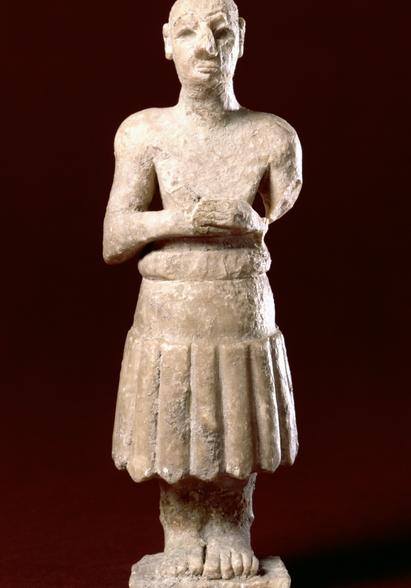
Sumerian worshipper in fur clothing
This statuette depicts a male worshipper in a traditional Sumerian kilt. Such figures were placed in temples to represent individual worshippers. Typically, the head was shaven and the torso bare.
His hands are clasped and his eyes slightly raised as gestures of reverence and of devotion to the deity. This type of kilt was commonly worn by elite males, especially. No actual examples of kilts have been found in excavations, so we depend on artistic depictions and textual descriptions for our knowledge of these garments. They were either made of cloth, or of a sheepskin with the fleece side showing. In this example, the fleece only covers the lower part of the garment and the rolled edge secures it at the waist.
The alabaster statuette is 26 cm in height and from southern Mesopotamia. It is dated to c. 2600 BC.